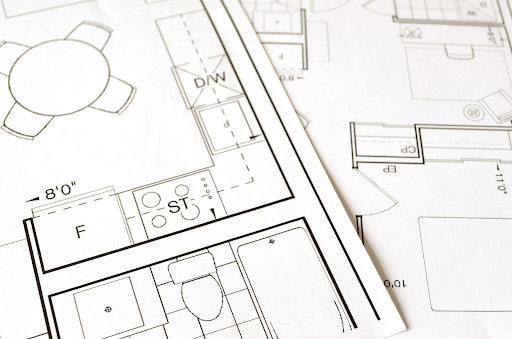The Modern Household Census: Counting What Really Matters
Key Takeaways:
- Modern households come in various forms beyond traditional family units.
- Household definitions impact your eligibility for various services and benefits.
- Economic and social factors significantly influence household composition.
The Changing Landscape of Household Definitions
The concept of a household has evolved drastically over the years. Gone are the days when a household comprised a nuclear family. Today, households can include multi-generational families, friends living together, and single-parent units. Understanding what is considered a household is crucial as it affects your eligibility for various services and benefits.
The modern household is a mosaic of diverse individuals living together, reflecting broader societal changes. With diverse household compositions becoming more common, it’s clear that economic pressures, cultural transformations, and social norms are reshaping our understanding of family units. These changes highlight the importance of reevaluating outdated definitions to accommodate different living arrangements.
Factors Influencing Household Composition
Several factors contribute to why households look the way they do today. Economic pressures, cultural shifts, and social norms all impact household formations. For instance, economic downturns have led many millennials to move back in with their parents to save on living expenses. This phenomenon isn’t just limited to millennials but also affects other age groups facing financial instability.
Additionally, cultural shifts have seen a rise in unconventional living arrangements. Co-housing communities, where unrelated individuals share living spaces to reduce costs and foster a sense of community, are becoming more prevalent. Social norms, too, are increasingly accepting of these diverse household models, acknowledging that the traditional nuclear family isn’t the only way people can live harmoniously.
Household Dynamics and Shared Responsibilities
Modern households adopt a collective approach to managing responsibilities in today’s ever-evolving family dynamics. This includes sharing financial planning, chores, childcare, and the active participation of multiple generations within a single household. For instance, multi-generational households find that grandparents often play a vital role as the primary caregivers for their grandchildren, serving as a support system that enables parents to maintain focus on their careers.
This collaborative model streamlines the management of daily tasks and nurtures stronger bonds and communication among household members. Distributing responsibilities across the family unit alleviates the burden on individuals, leading to a more harmonious and cohesive living environment. Ultimately, this approach fosters a profound sense of unity and teamwork, contributing to the enhanced functionality and well-being of the household.
Implications for Public Policy and Benefits
How households are defined has significant implications for public policy. Government benefits, tax filings, and eligibility for various programs are often contingent on a household’s structure. For example, the definition of a household can affect your eligibility for nutritional assistance programs. Policymakers must recognize these varied household formations to ensure that benefits are distributed fairly.
The evolving nature of households necessitates a dynamic approach to policy-making. As household compositions shift, so should the criteria for public benefit programs. Failure to adapt can result in insufficient support for those who need it most, underlining the importance of inclusive and flexible policy frameworks.
Technological Advancements and Household Management
Technology plays a crucial role in modern household management. From smart home devices to apps for tracking chores and expenses, digital tools have redefined household dynamics. Technologies also bring convenience, making it easier for diverse household structures to manage their responsibilities efficiently.
Innovations like voice-activated assistants, automated home security systems, and energy-efficient appliances have transformed our lives. These advancements enhance the quality of life and streamline everyday tasks, enabling household members to focus on more meaningful activities and interactions.
Social Relationships and Emotional Support in Households
The emotional and social support present within a household has a profound impact on its members’ well-being. Countless studies emphasize the vital role of a decisive household support system in alleviating stress and promoting overall mental well-being. When household members genuinely care for one another, it creates an environment that fosters personal growth and resilience.
The emotional connections established within a household act as a powerful defense against external stressors. Whether it involves engaging in heartfelt conversations, sharing regular meals, or collaborating to solve challenges, the emotional support available within a household can significantly influence the quality of life for its members.
Households Across Different Cultures
Household structures vary significantly across cultures, reflecting diverse societal values and norms. In many countries, multi-generational households are prevalent, where grandparents, parents, and children cohabit. It’s crucial to grasp the cultural context when defining what constitutes a household.
For example, in many Asian cultures, multi-generational living is deeply rooted and signifies family cohesion and reverence for elders. This arrangement fosters strong family ties and collective support. In contrast, Western cultures often place a premium on independence, leading to a prevalence of nuclear families. Understanding and acknowledging these cultural nuances is imperative for developing inclusive policies and services that address the needs of a heterogeneous population.
The Future of Household Definitions
As society continues to evolve, so will the definition of a household. Factors like economic changes, technological advancements, and shifts in social norms will continue to shape what we consider a household. Future policies and services must accommodate these changing dynamics to stay relevant.
Anticipating these shifts requires a forward-thinking approach. As technological advancements make remote work more feasible, we may see an increase in transient or nomadic households. Social norms around cohabitation and co-parenting are also likely to evolve, necessitating continuous reassessment and adaptation of household definitions and related policies.
Keep an eye for more news & updates on GlamourUer.Com!






